Over 43,000 different spider species are found across the globe. Out of these spiders, only a small number of spider species are considered dangerous and only 30 have been responsible for human deaths. There are speculations that how come only few spiders possess danger to humans? The major reason is the difference between the size of a spider and humans.
In this blog, we have shared information about the most deadliest spiders in the world. However, let’s talk about spider venom a bit. Spider venom is mainly for attacking small animals, but some species’ venom are capable of producing skin lesions in people. If not skin leisons, it can cause allergic reactions in some people, which can even lead to fatalities. You must know that death by spider bite is something very rare as clinics, hospitals and poison control centers have the antitoxin to treat the bite immediately.
Table of Contents
Deadliest Spiders in the world
Whistling Tarantula
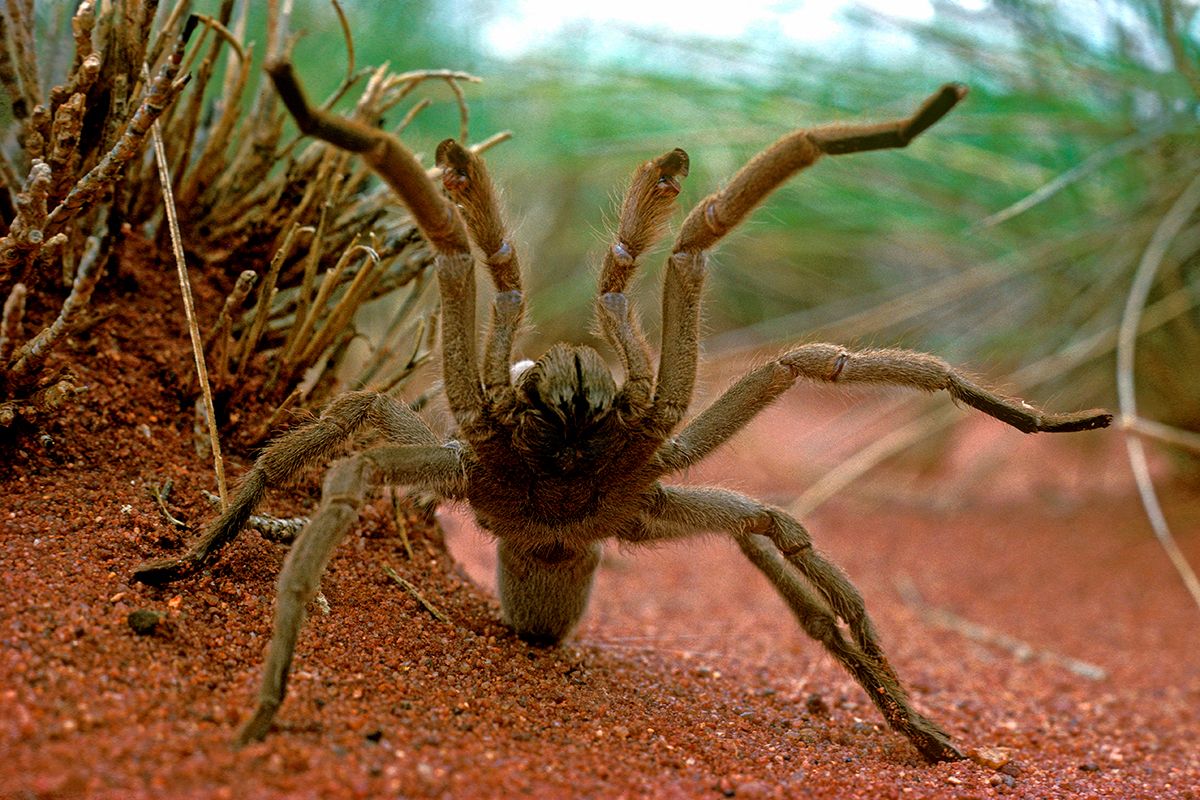
With the scientific name ‘Selenocosmia Crassipes’, Whistling Tarantula is an Australian spider species. Also known as barking tarantulas for its hissing sound when provoked. Even though the venom of whistling tarantulas is not fatal to humans, it can cause a punch due to the 1 centimeter fangs. However, a bite from this species can kill a huge dog within 30 minutes. In case of a full envenomation to a fully-grown adult, they might end up vomiting their gut out for around 6 to 8 hours.
Their bites are very painful due to their long fangs and you might find the area swelling, increasing the bite mark to extremities. In 2010, a Whistling Tarantule bit a researcher of Queensland and this is how he described his experience, “The pain was so intense that sleep that night was impossible. Fifteen hours post-bite, the adjoining finger, and upper hand were also swollen and painful.” Although, you won’t die when bitten by one, you need to go for a medical checkup right away, if situation occurs.
2. Yellow Sac Spider
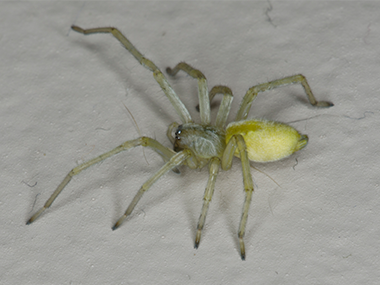
Having the scientific name ‘Cheiracanthium Inclusum’, Yellow Sac Spiders are widely distributed in different areas of the world. They range from the size of 3mm to 15mm. You would have seen them a number of time without knowing that they are one of the most deadliest spiders in the world. They are that small. However, size is not a factor that matters when it is about spider bites. The venom of a Yellow Sac Spider consists of cytotoxin – an extremely nasty substance that causes that affects call functions and can even lead to cellular death.
As soon as it bites, you will know because it is extremely painful. The only good thing about this spider’s bite is that it won’t kill you. However, you may wish to die with the excruciating pain it causes. No deaths reported due to Yellow Sac Spider’s bites. They are known for defending their territories aggressively. So, make sure you don’t threaten any of their egg sacs! The venom of a Cheiracanthium causes limited skin necrosis in the affected area and it could probably lead to confusing it with a Brown Recluse bite. Some species’ of a Yellow Sac Spider can cause severe damage, but the most usual ones remain to be C. Mildei and C. Inclusum.
3. Brown Recluse Spider

The next on the list is the most threatened spiders in the world due to its venom characteristics. The venom of Brown Recluse Spider is highly necrotic and even though it doesn’t cause death, it will lead to tissue death. Very similar to a rattlesnake bite, a Brown Recluse’s venom will pass through the veins from the site of the bite leading to death of the tissue at the site. One of the major problems with a brown recluse’s bite is that you might not feel the pain immediately. Moreover, the effects are also seen quite late and misunderstood as results.
The extremity of the necrosis differs and not every bite leads to tissue death. Out of the majority of spider bites, only 37% lead to death of the tissue. A small number of people may face the problem of hemolysis, the damage of red blood vessels. The reason why these spiders are dangerous for humans is the fear of necrosis. This species is found all across the central and southern regions of the United States. Thankfully, they are not always in an aggressive mood.
4. Redback Spider
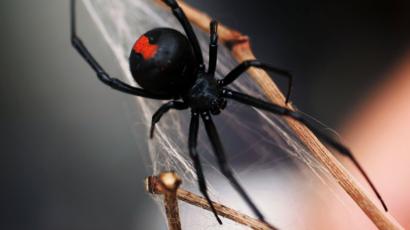
Also called Latrodectus Hasseltii scientifically, Redback Spider is often confused with a Black Widow Spider. Why? Because of their same color pattern and the red mark on the back of the females. Also called Australian Black Widow, these are one of the most venomous spider species in the world having different kinds of neurotoxins that causes a staggering pain that is beyond explanation. Thankfully, they don’t bite very often with full venomization, They prefer holding back their precious venom for killing their preys.
If a Redback Spider ever delivered full load in a bite, it would definitely kill a human. However, there are no known deaths by a bite of a Redback Spider since the discovery of its antivenom ion the year 1956. Before the invention of the antivenom, a bite of the Redback Spider could possibly result in death. The harmful symptoms from this spider’s bite include excessive sweating around the site, nausea, vomiting and muscle weakness.
5. Brown Widow Spider
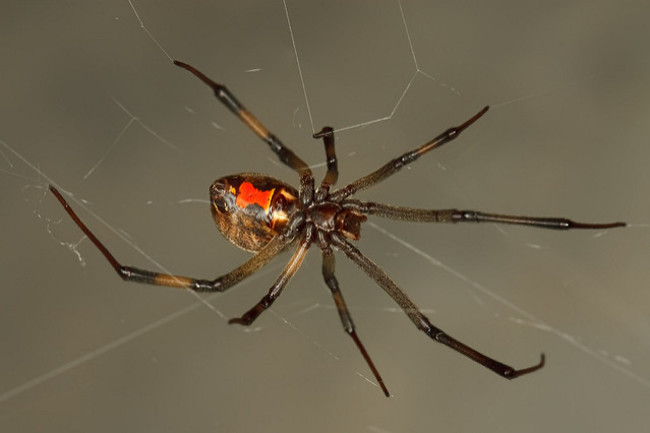
Also known as Latrodectus Geometricus, this species of spider is a very harmful cousin to the much known species, Black Widow. These little beasts roam around with a highly dangerous amount of neurotoxin that can lead to latrodectism, a condition named after the its bite (referring to its name ‘latrodectus’). The Brown Widow’s venom is comparatively more toxic than a Black Widow spider. However, due to its stingy nature, it never envenomizes completely when striking humans. These are shy creatures that only attack when disturbed or threatened.
Nevertheless, a Brown Widow Spider’s bite would be extremely hurtful. There are no deaths recorded due to its bite, but the pain from one bite can be equal to what you may feel when hit with a sledgehammer. The venom results in instant muscle contractions and pain. And if the bite is left untreated , it can lead to cerebral or spinal paralysis. Today, this spider species is found all across the world.
6. Six-eyed Sand Spider
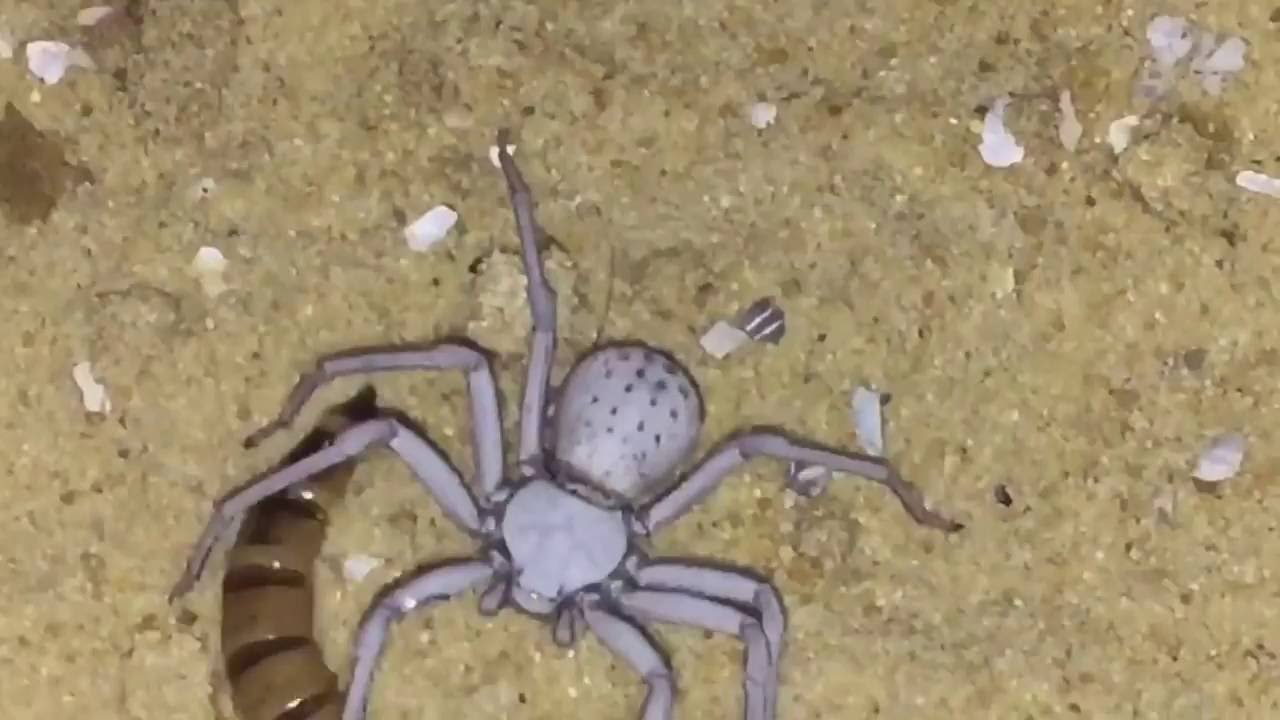
Scientifically called Sicarius Hahni, this spider species is known as the relative if recluse Spiders. Only found in the Southern African deserts, these spiders are masters in camouflaging. They go unidentified by passersby because of the tiny hairs all over their body, called setae. Moreover, the hair collect sand particles and forms a kind of ghillie suit. It wears this natural suit and buries under the sand. The spider stays there under the sand for as long as it gets a prey to attack. They attack humans rarely, but whenever they do, the bite could be extremely deadly.
Most bites do not lead to complete envenomization as they prefer storing their venom for food – the prey they kill and east. Now, this becomes a good thing for humans as if it would have envenomized people completely, it would call for their end! Full envenomization of a human leads to hemorrhage, liver failure which is followed by kidney failure and eventually death. There is no antivenom! However, there are no cases of death recorded.
7. Black Widow Spider
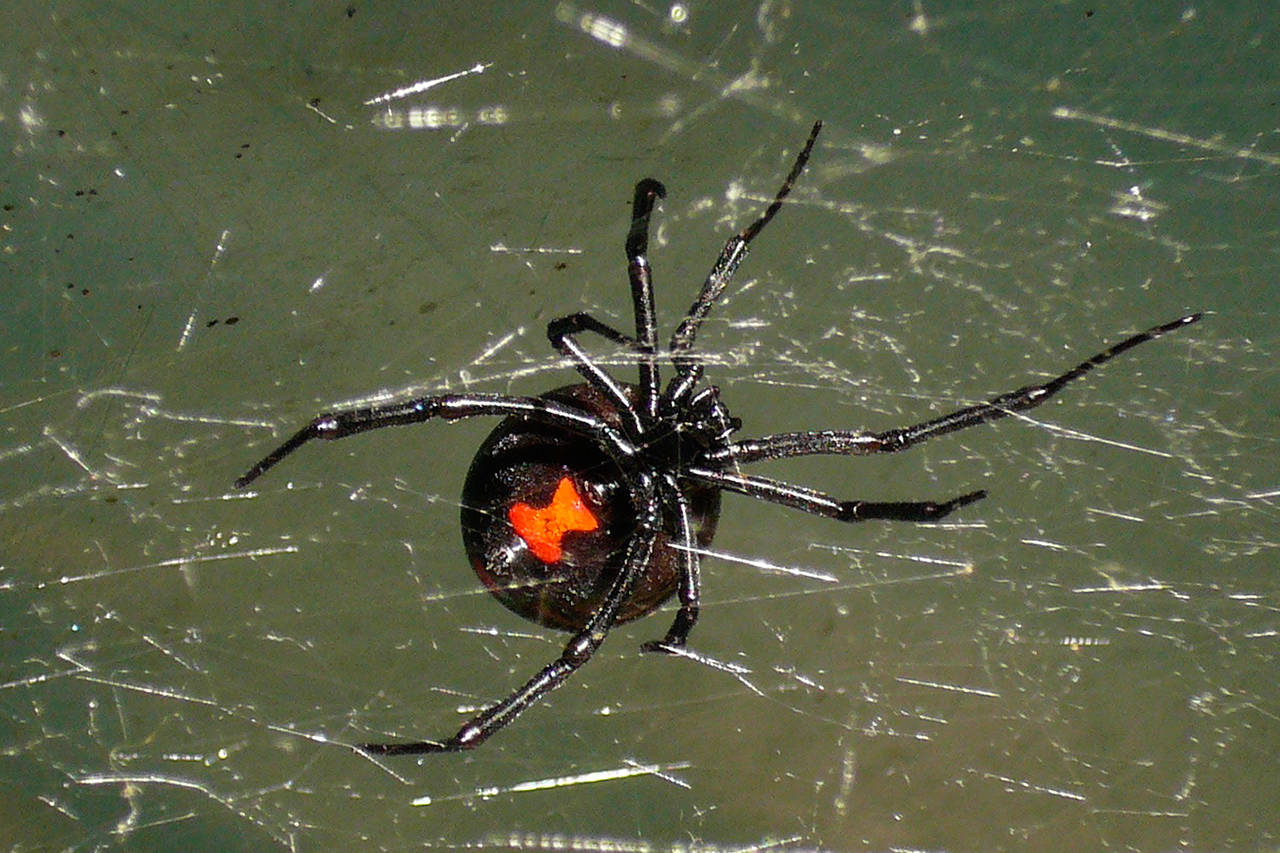
Cousin to the Brown Widow Spider, Black widow Spider or Latrodectus Mactans is one among the notorious arachnids on the planet. ‘Black Widow’ is a term used for a woman who has killed her husband or husbands. But, you must have come across the term in the Marvel Comics, who have named one of their assasin after these little bugs. These spiders are commonly found across Central America, North America, West Indies and Africa. There’s a chance you have one crawling around you right now!
Black Widow Spiders are one of the most venomous spiders in North America as per the reports of National Geographic. Their venom is almost 15 times powerful as compared to a rattlesnake. A Black Widow bite will cause pricking of the skin at the site, but that’s not it. The bite size might look small but you have a very dead;y venom running through your veins that would result in nausea, muscle cramping, diaphragm paralysis and difficulty breathing. Theoretically, their bite can kill an elder person or an infant. However, there are in such cases of deaths known till date.
8. Chilean Recluse Spider

Also called Loxosceles Laeta, these Chilean cousins to Brown recluse Spider are the most dangerous of all the recluse family. The brown recluse fail in front of the level of danger these Chilean Recluse can pose on the victim. Their bite can lead to severe damage and even cause death. Thankfully, they don;’t attack humans unless disturbed or threatened. Their venom consists of a dermonecrotic agent, which kills the skin tissue in the bite area. If the bite is more serious , it can even lead to deadlier problems.
In almost 4% of the bite cases, the venom led to serious multiple failures of organs resulting in death of the victim. When does this happen? Well, it is because of the large amount of venom released and if it strikes an area close to the kidneys or heart. The most common reaction of a bite that causes full envenomation is renal failure. However, this situation is quite rare. The venom of a Chilean Recluse Spider is 15 times more harmful than a few cobra species and has 10 times more potency than sulfuriuc acid.
9. Sydney Funnel Web Spider
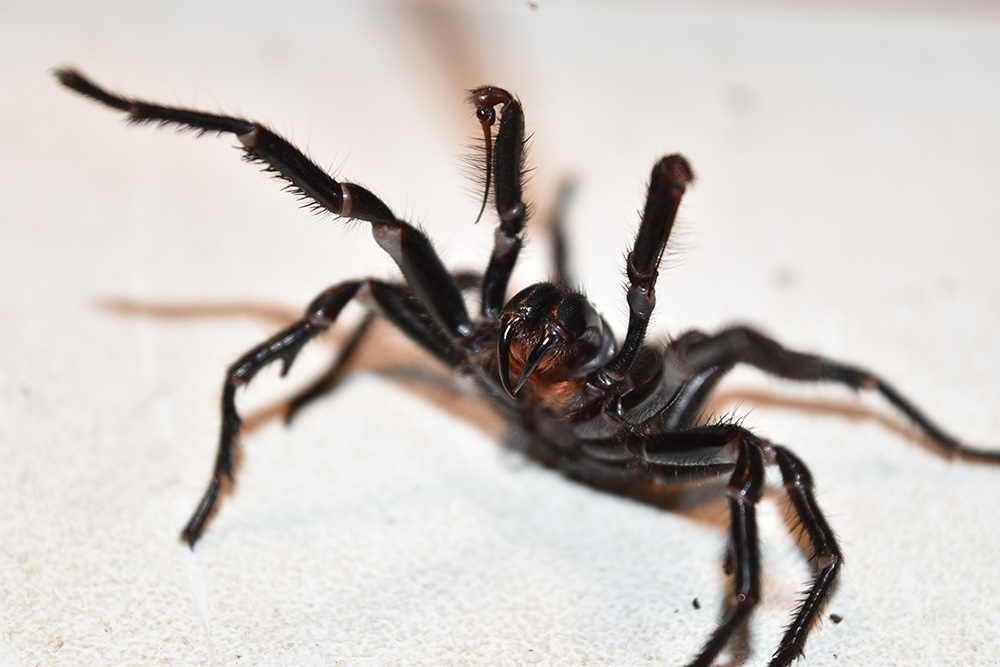
With a scientific name ‘Atrax Robustus’, this species of spiders is one of the most venomous spiders according to the list of Guiness World Records. The classification is based on their toxicity to humans. A lethal venom dose of these spiders is not yet known, but its lethality is noted to be 0.2mg per kilogram to the crab-earing macaque. A male Sydney Funnel Web Spider releases an average venom of around 176mg.
Their venom is specifically dangerous to primates, under which humans are classified. The venom of a Sydney Funnel Web Spider consists of δ-atracotoxin, a compound that has the capability to inhibit the nervous system of a primate and they don’t hold back any amount of venom on biting. Snakes are known to reserve their venom, but that is not the case with these spiders. They release full envenomation during a bite. Several death reports have been recorded before 1991, until when there was no antivenom for the spider bite.
10. Brazilian Wandering Spider
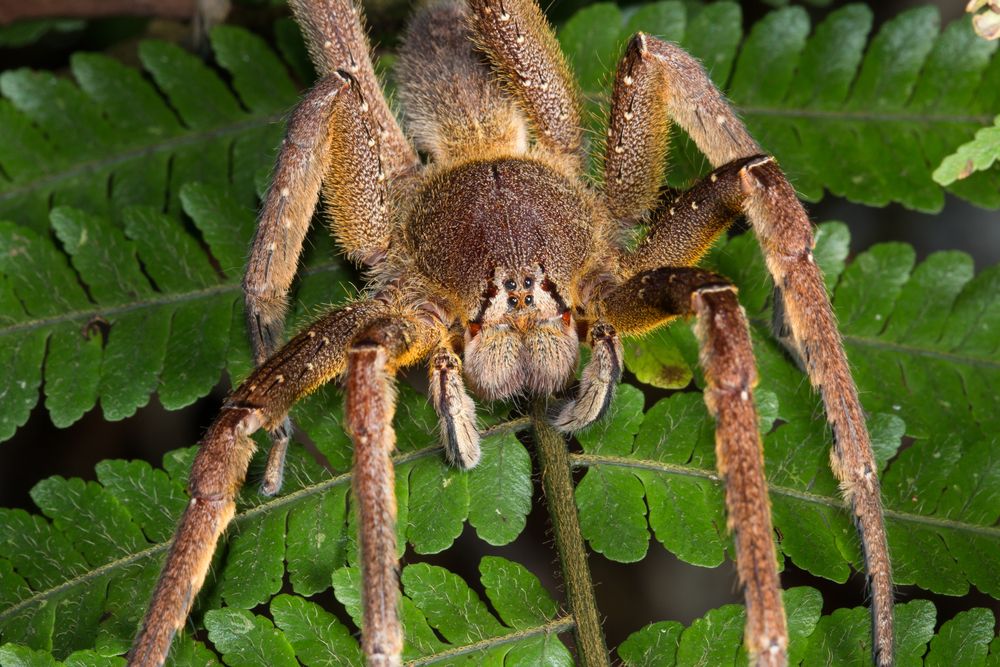
Also called Phoneutria Fera, these spiders are among the most feared species of spiders on this list. The Brazilian Wandering Spider deserves a spot on the list of the most deadliest spiders in the world. They don’t always set up a web for trapping their prey. Though rare, humans are also its prey. However, they don’t bite humans to eat them, but they cold if they want to! They prefer hiding inside the bunch of bananas waiting for a passing animal to attack and eat. They could also attack an individual who is there to harvest bananas.
If it bites a human, it will kill the person within an hour if not treated immediately. Thankfully, they don’t envenomize humans with their bites. Basically to preserve it for their actual preys. Apart from tachycardia, there are various other side effects of a bite by Brazilian Wandering Spider such as blurred vision, hypothermia, nausea and death. Males may encounter a painful erection which might continue for hours. So, if the embarrassment doesn’t kill the person, avoiding immediate treatment definitely will. So, now you know that avoiding picking some bananas is better than risking your life with a spider bite. Stay away from the banana trees, if you see these spiders amid the bunch.
11.Mouse Spider
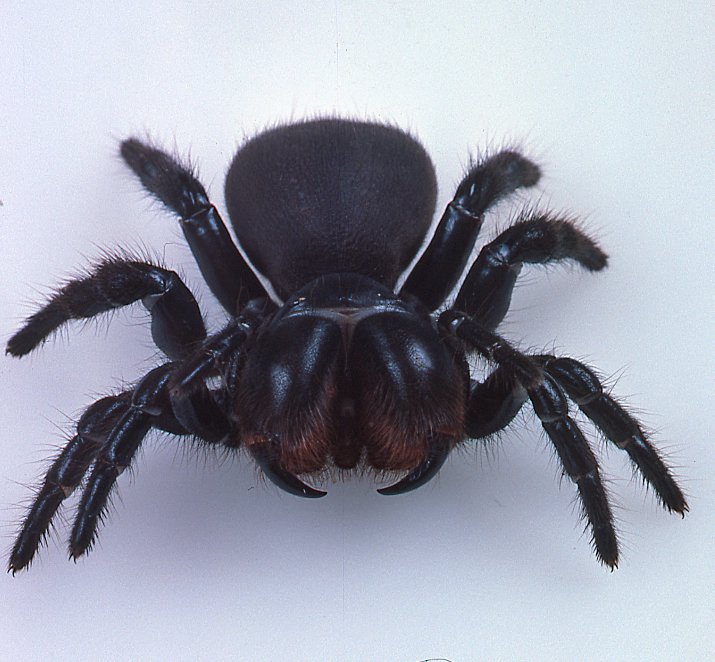
Otherwise called Missulena, Mouse Spiders are Australian spiders that have 12 different species in Australia. They got the name because of their furry abdomens, soft as that of a mouse. No, it is not because they may eat a mice. Well, actually they would if need be! They are armed with large fangs and their venom is equally venomous to that of a Sydney Funnel Web spider. It is one of the most dangerous spiders who will ever encounter.
Although the Missulena is extremely dangerous, they are not as aggressive as the Sydney Full Web Spider. Moreover, they strike with dry bites, without venom. Now you know why it is placed so down the list.
12. Hobo Spider

Also known as Tegenaria Agrestis (Latin name), Hobo Spiders are the ones yielding severe bites to lab animals. Their bite can result in necrosis like the Brown Recluse spiders, but less serious. The danger they can cause to humans is still a matter of debate. When a Hobo Spider bites, it leaves an open wound at the site that take several weeks to heal.
They are a couple of reasons why we thought it to be worthy adding this spider species to this list of the most deadliest spiders of the world. Firstly, they are aggressive and commonly found, which indicates higher chances of an actual bite. At times, this spider is also called ‘aggressive house spider’ referring to T. Agrestis, its Latin name.
Secondly, it has only been recently that the species has arrived in North America. Earlier, it was common in most regions of Europe and went unnoticed practically over time.
13. Red Widow Spider
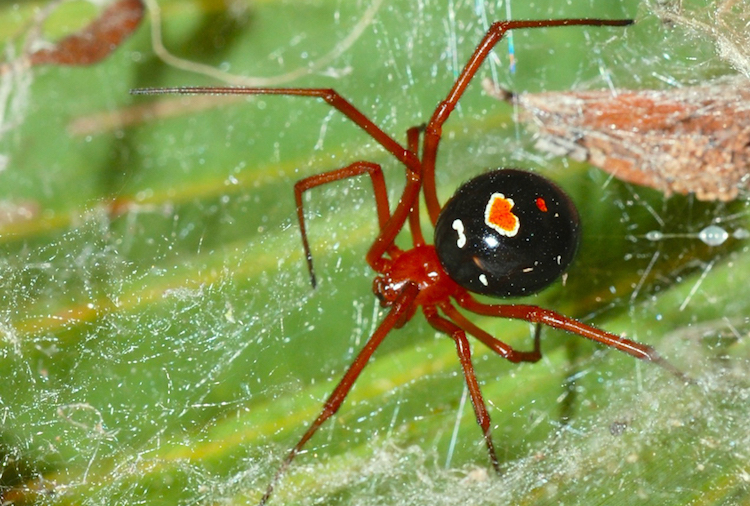
The spider’s look is prominent from other widow spiders through its reddish cephalothorax and legs and its reddish-brown to black colored abdomen. Many purple widows have a crimson mark on the underside of the abdomen, which can be either hourglass-shaped, triangle-fashioned or vague. The upper portion of the stomach is somewhat purple or orange, with every spot surrounded by a yellow or white define. The legspan of an adult woman is 1. 5-2 inches, whereas the male is the closest approximately one-0. 33 of that length. Currently, Pink Widow Spiders inhabit palmetto-ruled scrublands in vital and Southern Florida; but, a few professionals agree that this range can be expanding.
The spider feeds on bugs, and it isn’t considered to be competitive towards people. However, it’s been regarded to chunk when it’s far defensive its eggs or whilst it is trapped against someone’s skin by means of clothes or footwear. The chunk of the red widow is much like that of the black widow, and identical signs and symptoms (ache, cramping, nausea, and so on.) generally end result. Likewise, death from a red widow bite is uncommon, because the spider injects such a small quantity of venom. Infants, the elderly, and those with health problems are maximum prone to purple widow spider bites.
14. Camel Spider
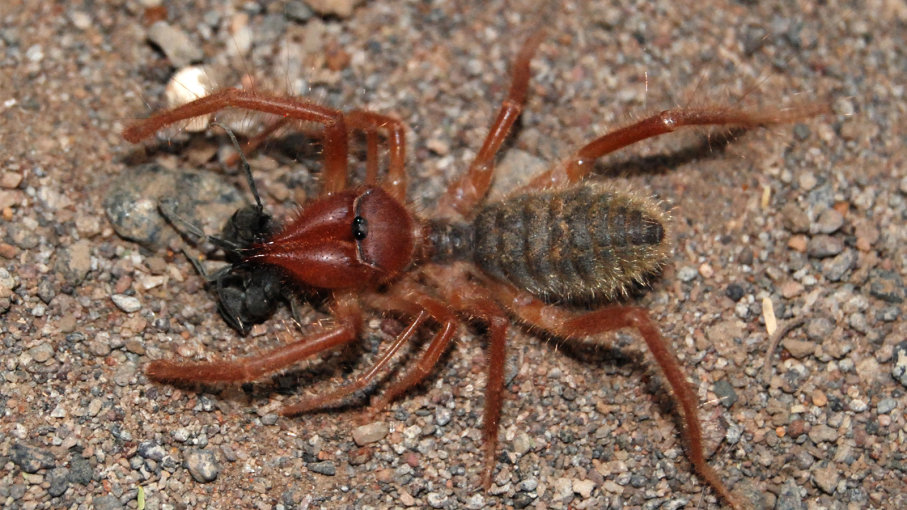
Also referred to as Solifugae, the camel spider is no less than a nightmare. The largest of all species is the Egyptian Giant Solpugid almost 15 inches in length and they have powerful jaws. Their jaws makes them the scariest spiders in appearance that you will feel if it is actually a spider! Well, it isn’t exactly a spider. No, it isn’t a camel either. What we are trying to say here is Camel Spiders are a type of arachnid that is known as solifuges. The literal translation of ‘solifuges’ is ‘flee from the sun’. Also known as sun spiders and wind scorpions, solifuges are found in almost all the deserts across the world.
So, why is the camel spider in the list at all? Well, because they look so big and fierce. They are also lightening fast and have the ability of running at the speed of 10mph. Solifuges can cause intense pain through its bite but they are not venomous. So, these stories about them disemboweling camels, crawling under camels and eating the insides.
Conclusion
So, now you know spiders can be dangerous and some can even be deadly. These spiders are among the deadliest ones that you would ever come across. The next time somebody asks you about the most venomous spiders in the world, you will know what to answer!


